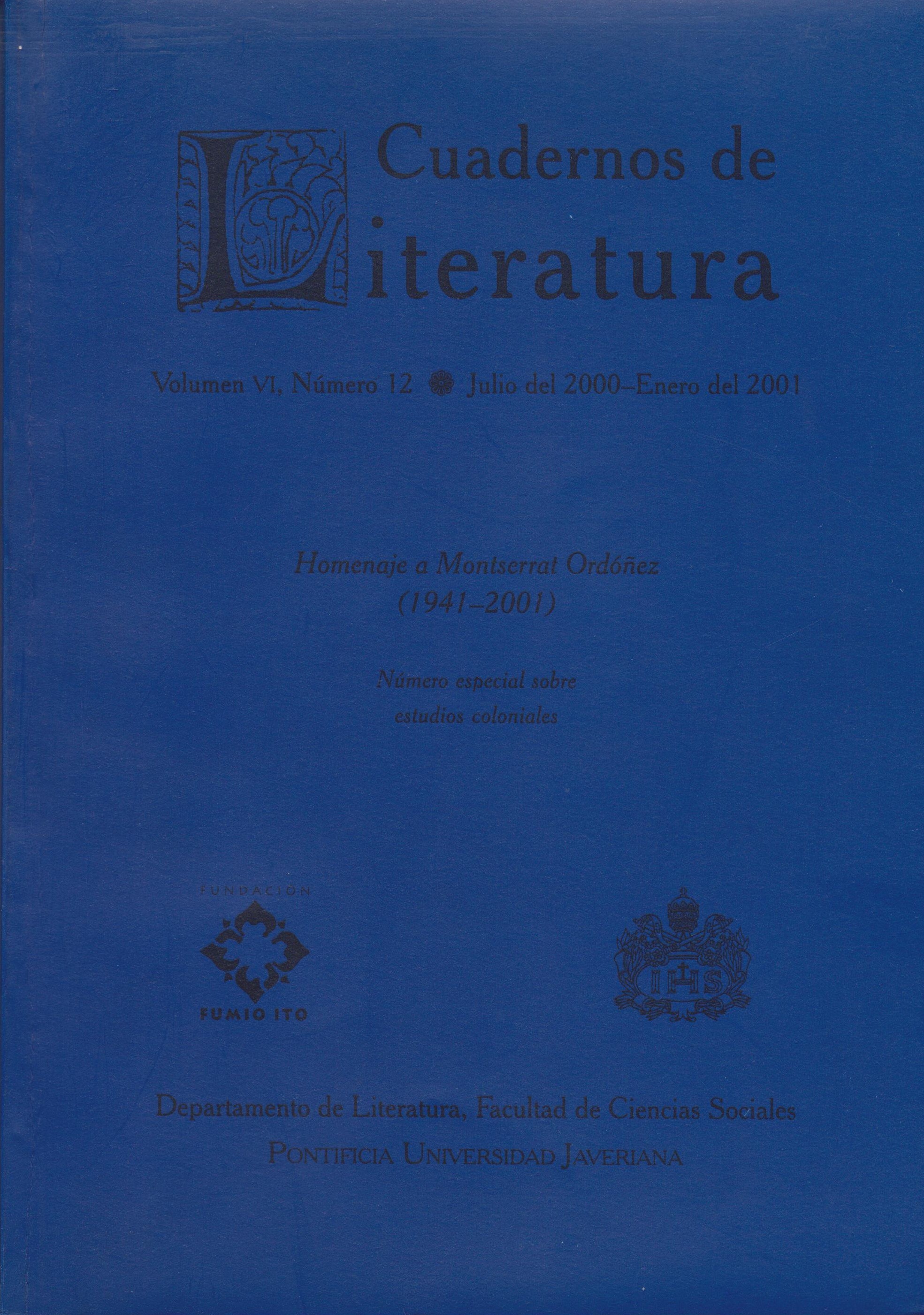Abstract
En 1707 y en el Convento de Santa Clara de Santafé de Bogotá, Jerónima Nava y Saavedra comenzó a escribir su autobiografía espiritual a petición de Juan de Ormos, su confesor. Por tal motivo, fabricó una narración confesional y mística organizada en torno de las experiencias de un individuo que en realidad no era ella. La primera persona del relato se dirige a Olmos, portador de la Ley del Padre, quien controla el punto de vista y el contenido del relato. El sacerdote acata así las imposiciones de la Inquisición que, como sabemos, desde el siglo XIV obligaba a los confesores a pedir que escribieran sus experiencias aquellos fieles que decían tener visiones supernaturales y llamados de Dios. El texto de Nava, por tanto, se halla atado a las políticas postridentinas.Cuadernos de Literatura is registered under a Creative Commons Attribution 4.0 International Public License. Thus, this work may be reproduced, distributed, and publicly shared in digital format, as long as the names of the authors and Pontificia Universidad Javeriana are acknowledged. Others are allowed to quote, adapt, transform, auto-archive, republish, and create based on this material, for any purpose (even commercial ones), provided the authorship is duly acknowledged, a link to the original work is provided, and it is specified if changes have been made. Pontificia Universidad Javeriana does not hold the rights of published works and the authors are solely responsible for the contents of their works; they keep the moral, intellectual, privacy, and publicity rights.
Approving the intervention of the work (review, copy-editing, translation, layout) and the following outreach, are granted through an use license and not through an assignment of rights. This means the journal and Pontificia Universidad Javeriana cannot be held responsible for any ethical malpractice by the authors. As a consequence of the protection granted by the use license, the journal is not required to publish recantations or modify information already published, unless the errata stems from the editorial management process. Publishing contents in this journal does not generate royalties for contributors.


